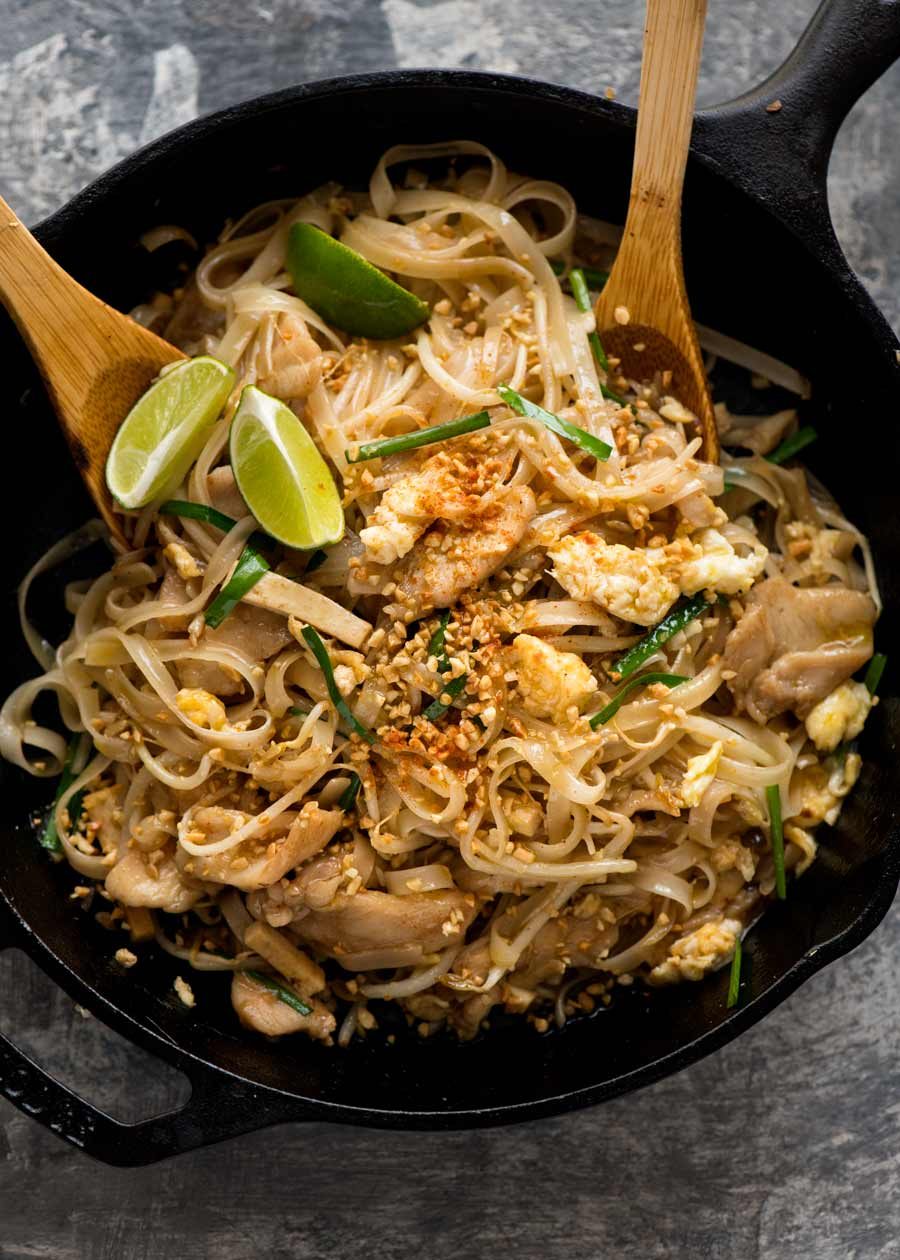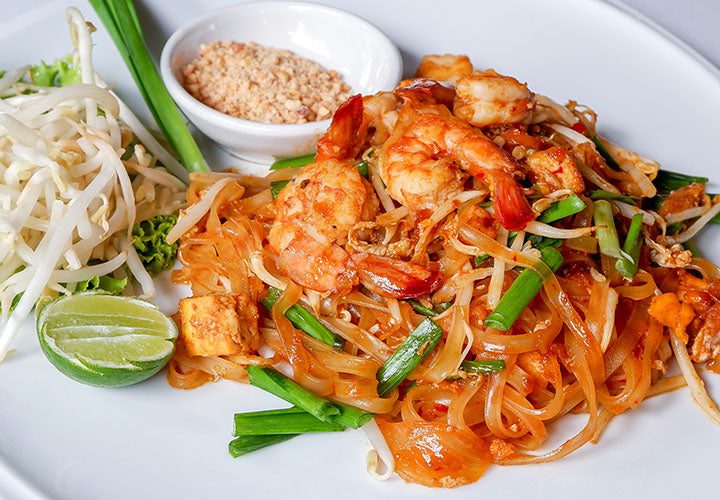Chicken Pad Thai: Street Food Elegance
This iconic dish balances sweet, sour, salty, and umami flavors in perfect harmony, featuring chewy rice noodles, tender chicken, and crunchy peanuts. The magic lies in the tamarind-based sauce that defines authentic Pad Thai. What makes this recipe special is the precise ingredient sequencing and high-heat technique that recreates authentic wok hei (breath of the wok) flavor in home kitchens.
The National Dish of Thailand
Pad Thai emerged in 1930s Thailand as part of a national identity campaign. Our version honors this history while adapting techniques for Western kitchens. The tamarind innovation provides authentic tanginess that distinguishes it from imitations. This recipe connects you to Thailand’s vibrant street food culture with every flavorful bite.
Ingredient Selection Guide
Noodles: Use 1/4 inch wide rice sticks. Soak until flexible but firm. They’ll finish cooking in sauce.

Tamarind: Pure paste provides authentic tang. Avoid concentrate with additives. Substitute: 1 tbsp lime juice + 1 tbsp brown sugar per tbsp tamarind.
Fish Sauce: Quality brands like Red Boat or Three Crabs. The aroma should be complex, not just salty.
Palm Sugar: Authentic flavor with caramel notes. Substitute brown sugar if needed. Grate for easy dissolving.

Advanced Wok Techniques
Mise en Place: Prepare all ingredients before heating wok. The cooking happens quickly once started.
Heat Management: Use highest possible heat. A well-seasoned wok prevents sticking. Add oil just before cooking.
Ingredient Sequencing: Cook proteins first, then aromatics, then noodles and sauce. Add delicate vegetables last to retain crunch.

Sauce Incorporation: Add sauce to hot wok sides to caramelize before tossing. The sugar should bubble vigorously.
Flavor Science & Chemistry
Tamarind tartaric acid balances sweetness. Fish sauce provides umami glutamates. Maillard reaction creates complex flavors. Wok hei produces smoky aroma compounds. Palm sugar caramelizes at 340°F.
Nutritional Benefits & Modifications
Complete protein, B vitamins from peanuts. For healthier: reduce oil, increase vegetables. Vegetarian: tofu instead of chicken, soy sauce instead of fish sauce. Gluten-free: ensure tamari substitute.
Creative Customizations
Shrimp: Substitute chicken with shrimp
Vegetable: Add bell peppers and carrots
Spicy: Include Thai chilies or chili paste
Peanut-Free: Use toasted sesame seeds
Pineapple: Add chunks for sweetness
Professional Chef Techniques
1. Bloom dried shrimp in oil for depth
2. Garnish with banana blossom for authenticity
3. Add preserved radish for texture
4. Use smoked tofu for complexity
5. Finish with toasted rice powder
Serving & Presentation
Serve on banana leaves if available. Garnish with lime, cilantro, and extra peanuts. Offer chili flakes and fish sauce on side. Pair with Thai iced tea or lager beer.
Storage & Reheating
Best served fresh. Reheat in wok or skillet with splash of water. The noodles absorb sauce when stored. Components keep separately 2 days.
Cultural Significance
This dish represents Thailand’s culinary diplomacy – a government-promoted dish that became global ambassador. As street food gains gourmet status, Pad Thai bridges authentic flavors and worldwide accessibility.
Final Thoughts
As you twirl each flavorful noodle, let this dish transport you to Bangkok’s vibrant streets. May it inspire culinary adventures and satisfy cravings for authentic Thai flavors.

Chicken Pad Thai
Ingredients
Method
- Soak noodles in hot water 30 minutes
- Mix sauce ingredients
- Prep all ingredients
- Stir-fry chicken in hot oil 4 minutes
- Add garlic, cook 30 seconds
- Push to side
- Add eggs to empty space
- Scramble until set
- Combine with chicken
- Add noodles and sauce
- Toss 2 minutes until coated
- Add bean sprouts and peanuts
- Serve with garnishes



